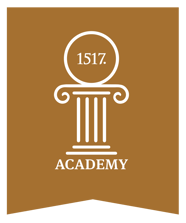Theology of the Augsburg Confession
In 1521, Martin Luther was banned from the Roman Catholic church for his teachings. In response, Luther and the first evangelicals of the Protestant Reformation insisted on a church council. Through official Church practice, they wanted to show that they were teaching biblical Christianity.
Meanwhile, The Holy Roman Emperor and the Pope were distracted by the very real threat of a foreign invasion, so they quickly dismissed the idea. But by 1530, this war of words in Northern Germany had reached a boiling point. In the town of Augsburg, the record was set straight:
The Augsburg Confession, which emerges from this meeting, outlines what Luther and the first evangelicals believed.
Join Dr. Scott Keith–1517 Executive Director, Professor of Theology, and author of, "Being Dad: Father as a Picture of God's Grace"–as he guides us through the Augsburg Confession and explains its key elements.
Topics Covered in the Course
- Historical Introduction
- Articles I-V: God, Original Sin, The Son of God, Justification, Office of the Ministry
- Articles VI-X: The New Obedience, The Church, Baptism, The Lord's Supper
- Articles XI-XIV: Confession, Repentance, Use of the Sacraments, Strength in the Church
- Articles XV-XIX: Church Usages, Civil Government, The Return of Christ to Judgment
- Articles XVIII-XXI: Freedom of the Will, The Cause of Sin, Faith and Good Works, The Worship of the Saints
Let's Get Started
This course contains six sessions, each containing a video lesson, course notes, and a quiz. You are also invited to join the discussion throughout the course as you watch these videos. You can complete this course at your own pace. So we encourage you to work through it at whatever pace is most comfortable for you.
At the end, you will receive a 'Course Completion Certificate' via email.





